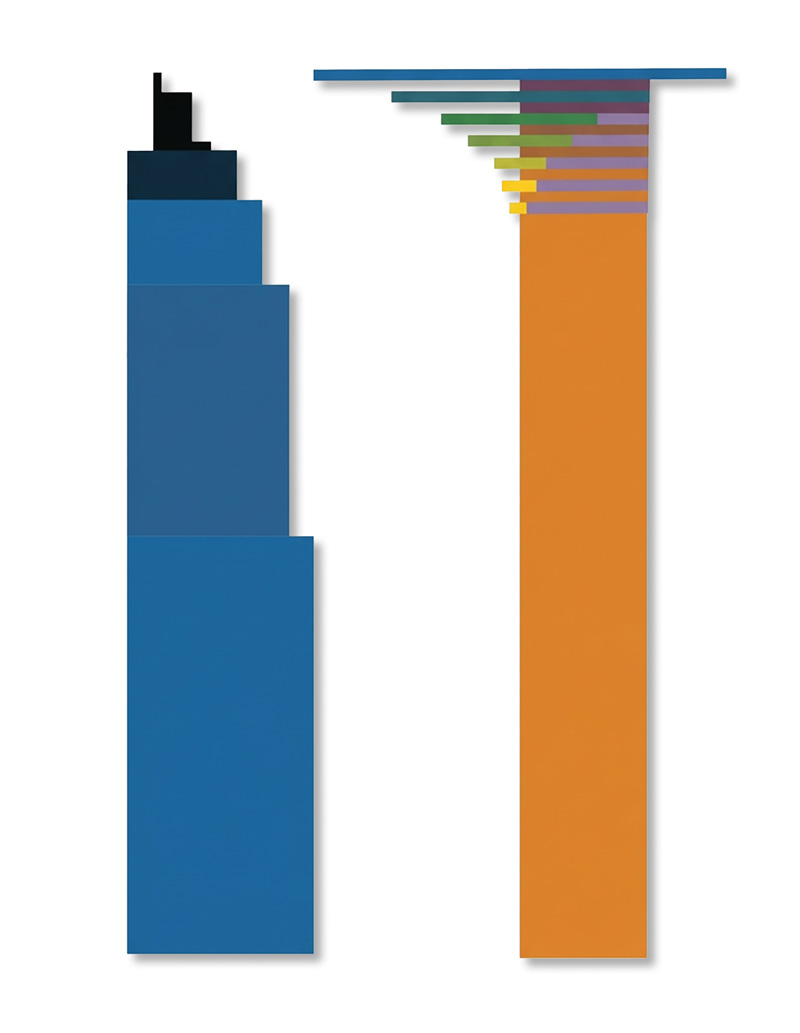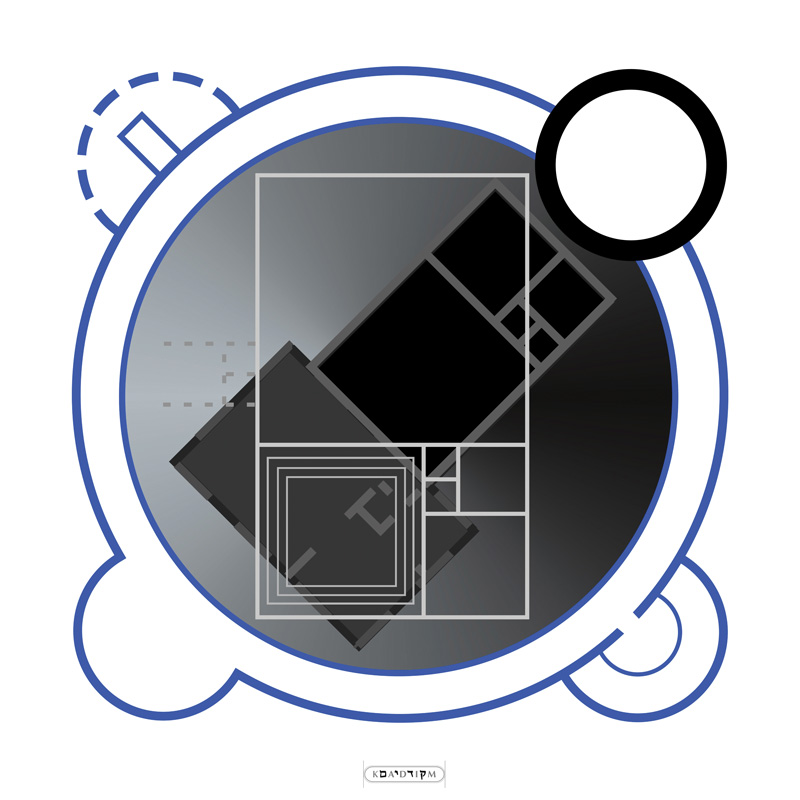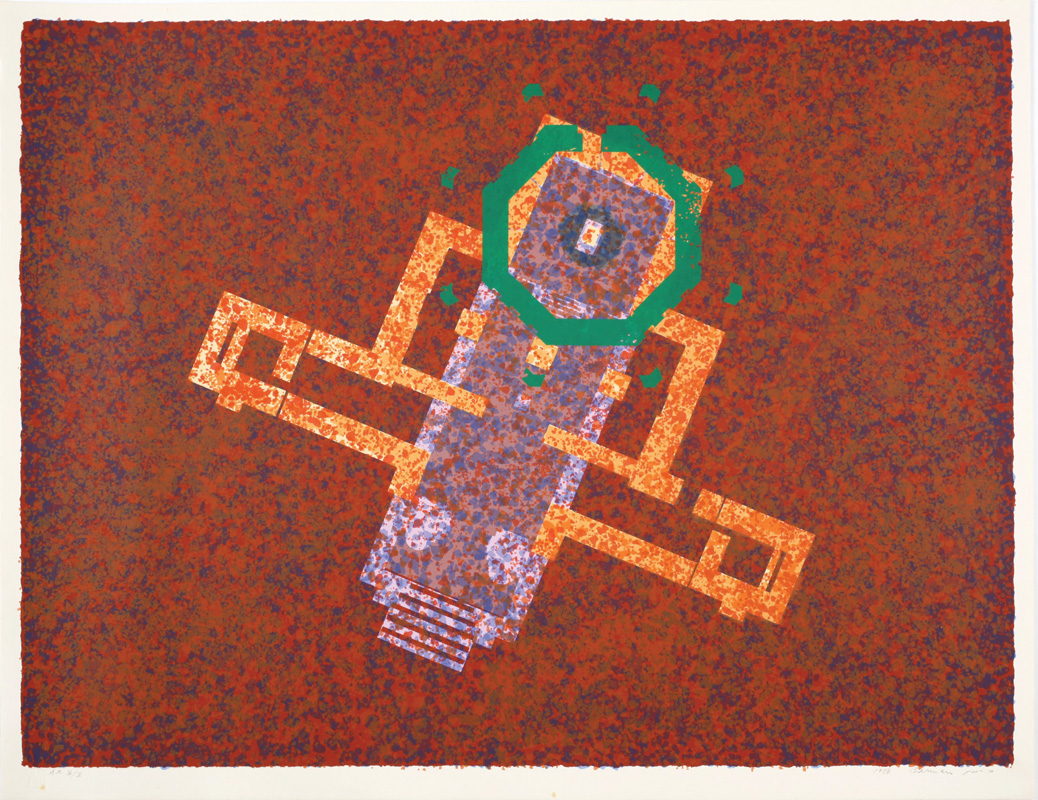במסעו לגילוי סוד הפרופורציות של מקדשים קדומים, מצרים ויוונים, גילה ברמן-קדים כי יש להם מכנה משותף החורג מעבר לזמן, למקום ולתרבות שבהם נבנה כל אחד מהם. בעבודות אחדות שילב אלמנטים אדריכליים מתקופות שונות, כגון תוכנית בית המקדש הראשון בירושלים, פרטים מהחומה שהקיפה את היישוב הכנעני בערד ואזכורים לתוכניות של מסגדים מהמאות ה-7 וה-8. במקביל מתחבר ברמן-קדים מחדש למקורות מערביים וחלק מהעבודות נעשו בהשראת אדריכל הרנסנס פאלאדיו (Palladio). ישנן עבודות המשלבות למשל בין צורת החלון בהשראת פאלאדיו וכותרת חלון המבוססת על טור פיבונאצ'י. בעבודה אחרת, כדי להתחבר לאמנות מודרנית הוא משלב בין השראות מפאלאדיו וסולם הצבעים הבסיסיים של תיאו ון דסבורג (Theo van Doesburg), מייסד תנועת דה-E סטיל ההולנדית.
אלה הם שורשיה של הסימביוזה המזרחית - מערבית של קדים; תוך כדי חיפושו אחר המזרח, גילה מחדש את המערב, והצליח למצוא דרך למזג אותם באמצעות כלי מופלא ואוניברסלי – חתך הזהב. אחרי שקדים למד להכיר את הטריטוריה החדשה שלו – מבנים מתקופותיהן הקדומות של יוון, מצרים וערב - הוא פונה לדרך חדשה, אשר תחילתה הסתמנה כבר בעבודות שעשה בשנות התשעים הראשונות, כמו "התיבה הפתוחה". זוהי דרך המלך של המארגים, המאפשרת לו לגבש שפה אמנותית חדשה ואפילו מהפכנית. זוהי גם העבודה הראשונה שבה הוא יוצר מארגים וקושר אותם עם המסורות הקדומות של מצרים ויוון.
On his journey to discover the secret of the proportions of ancient temples, Egyptian & greek, Berman-Kadim discovered that they have a common denominator that transcends the time, the place and the culture in which each of them was built. In the work Window Icon, 1990 (cat. 11, ill. p. 28), he integrated architectural elements from diverse periods, such as the plan of the First Temple in Jerusalem, details from the wall that encompassed the Canaanite settlement in Arad, and allusions to plans of mosques from the 7th and 8th centuries. In addition, the form of the window is similar to the windows designed by the Renaissance architect Palladio, and here Kadim rediscovers his Western sources. The work The Metaphysician's Window, 1985 (cat. 2, ill. p. 27), too, was inspired by Palladio, and the window's capital is based on the Fibonacci series. In order to emphasize the connection with modern art, in another work, Palladio Meets Van Doesburg, 1986 (cat. 5, ill. p. 27), Kadim integrates the form of Palladio's window with the scale of basic colors advanced by Theo van Doesberg, founder of the Dutch De Stijl movement, to whose theoretical writings Kadim had attributed an importance already in the sixties.
These are the roots of Kadim's East-West symbiosis; while seeking for the East, he rediscovered the West, and managed to find a way to blend them together by means of a marvelous and universal tool - the golden section. After Kadim had become acquainted with his new territory – structures from the ancient periods of Greece, Egypt and the Arab world - he turned to a new way, the beginnings of which were already apparent in the works he made in the early nineties, such as The Open Receptacle. This was the royal road of the patterns, which enabled him to crystallize an artistic language that was new and even revolutionary. It was also the first time he created weaves and intigrated the ancient Egyptian and Greek traditions into them.


























